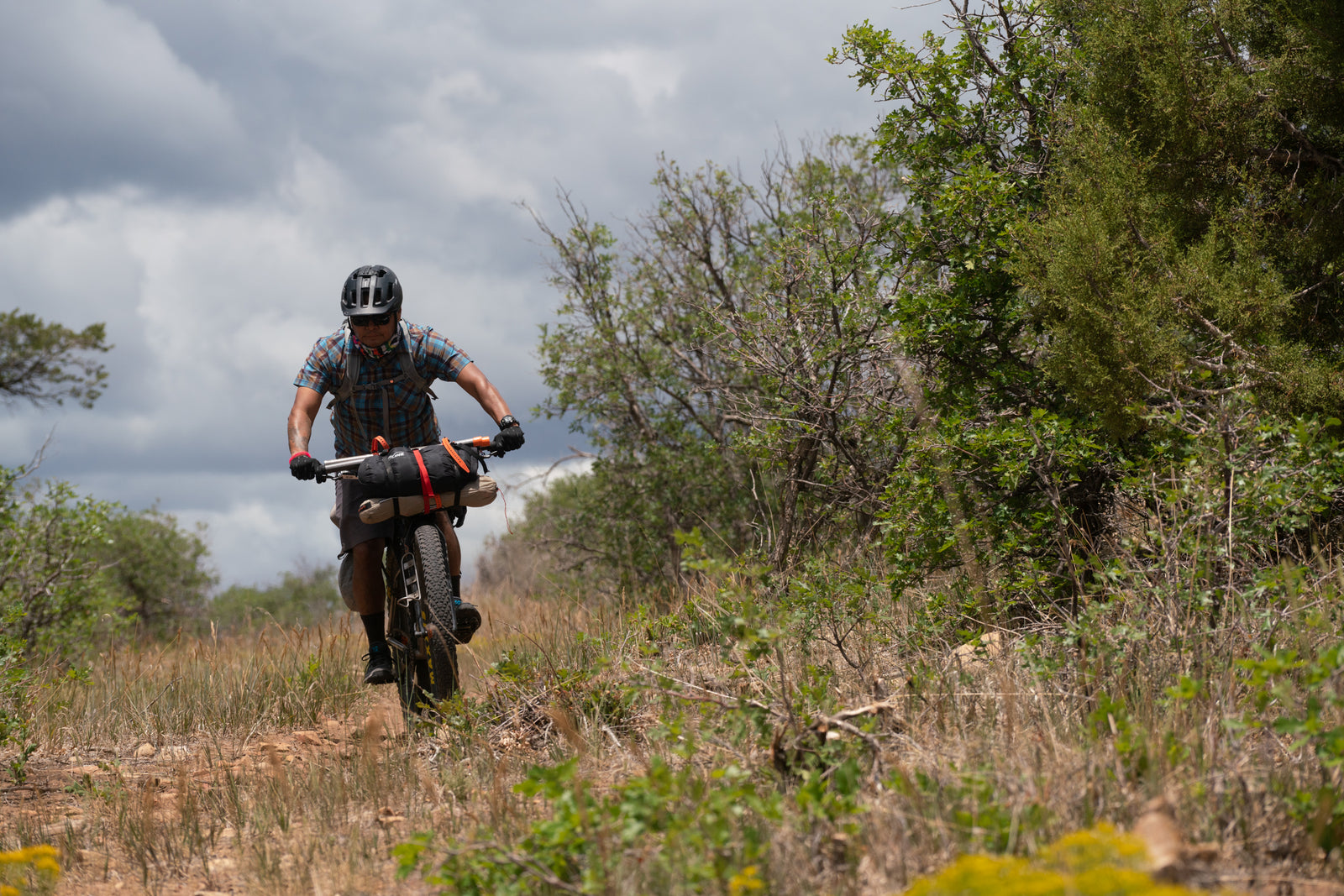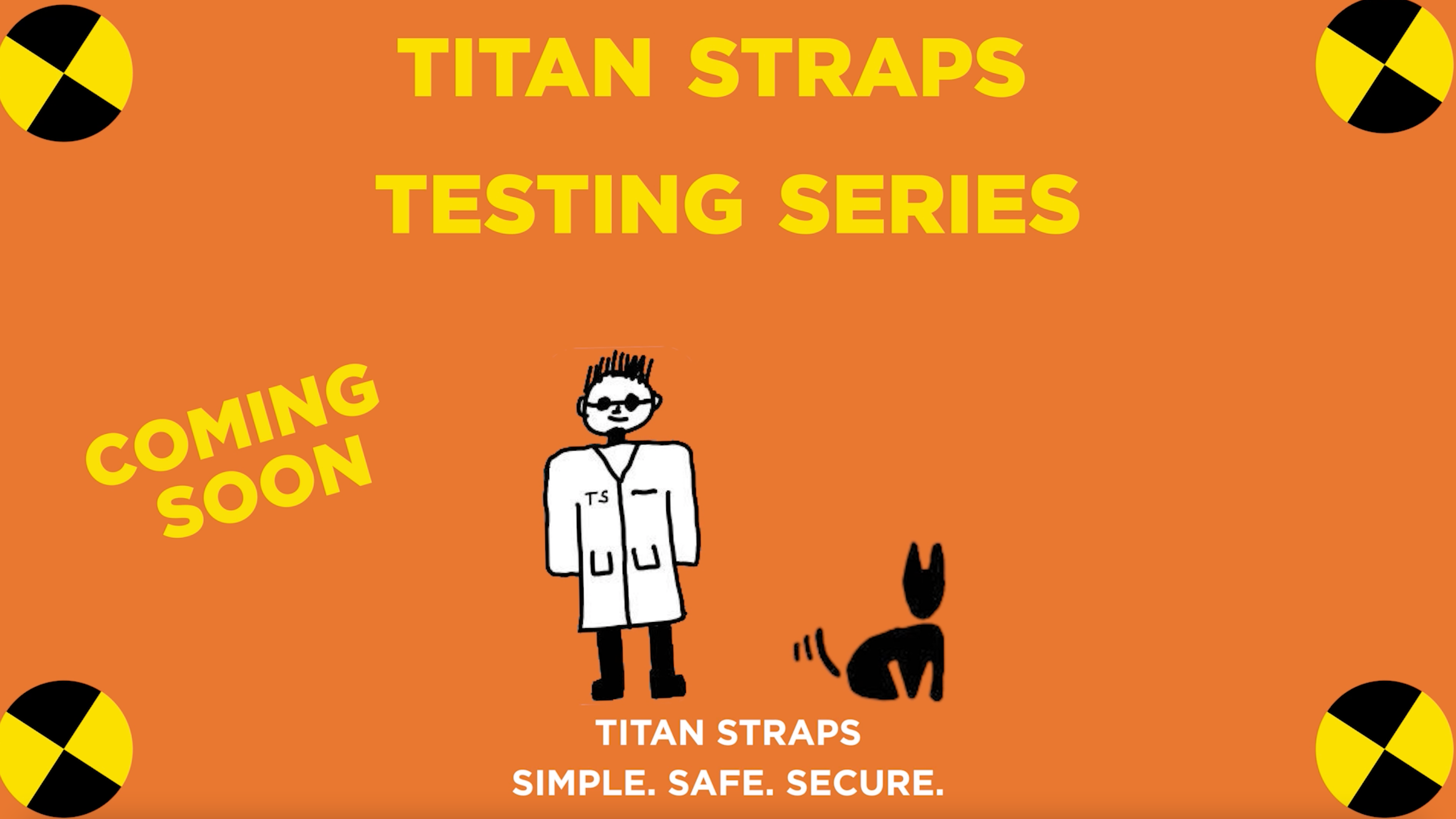Back to Bicycles: Jon Yazzie

Jon Yazzie on Single Speed Bikes, Youth Advocacy & What It Means to be Navajo
Jon Yazzie brings some impressive single-speed 24-hour race, bikepacking and route development accomplishments to the Titan Straps Ambassador Team. And he's the co-founder of the Navajolands Guide Service Dzil Ta'ah Adventures, along with Nadine Johnson. The duo founded the guide service to financially support their groundbreaking Navajo Youth Bikepacking Program. Jon is a true OG cyclist, and we're thrilled to have him on board. ~Cameron Lawson
Story by Lizzy Scully, photos by Steve Fassbinder.
 Jon Yazzie remembers his first few times on a bike. He lived with his family on Howell Mesa on the Navajo Nation, adjacent to Hopi Lands. Several cousins would come home from high school on the weekends. They built “chopper-style” bicycles, putting little wheels in the front and big ones in the back. And they tested some out on Jon.
Jon Yazzie remembers his first few times on a bike. He lived with his family on Howell Mesa on the Navajo Nation, adjacent to Hopi Lands. Several cousins would come home from high school on the weekends. They built “chopper-style” bicycles, putting little wheels in the front and big ones in the back. And they tested some out on Jon.
“They used to put me on bikes and push me down these steep dirt roads, sometimes on bikes with rims and no tires,” he says. “I was four or five. I loved it!” After he got used to balancing and not crashing, that is. In middle school he got a Kmart Special bike. And then finally his grandma and mom bought him a Schwinn Predator BMX-style bike, on which he did street-style tricks.
Riding bikes gave Jon a freedom he otherwise would not have experienced. His closest neighbors lived two miles or more away. “I had to ride my bike to play with other kids or visit family.”
Family Farming
Around that same time, Jon was helping raise, tend and herd the 30 to 50 sheep his family owned. He took the animals out in the morning to graze and brought them back in at night. He always maintained awareness of their whereabouts. The family also had abundant fields and crops.
Around 1974, with the passing of the Navajo-Hopi Land Settlement Act and the beginnings of coal mining on the Black Mesa, Jon and his family were kicked off their lands. (Read about the forced locations of many Navajo).
“We were removed from the area, and they forcibly removed our livestock,” Jon explains. Navajo peoples’ wealth was determined by their cattle and animals. Most people forced to relocate lost everything, and their families scattered, further thrusting them into poverty. Jon's family moved to Tuba City, Flagstaff, Ariz., and surrounding areas (Page, Albuquerque, etc) while he and his grandmother moved to Coal Mine Canyon. There they struggled to survive with their few remaining sheep.
For a "Better Life," or Not...
So the family decided to send Jon to Huntington Beach, California for “a better life,” he says. His new family baptized him, and he started to lose his connection to his Navajo roots.
“That was the first time I really experienced domestic violence,” he explains. His foster mom had terrible anger issues, abused her husband and would often disappear for days.
“Moving to California for a ‘better life’ did nothing but starve me and expose me to many things kids shouldn’t grow up with,” Jon says. “They tried to assimilate me into their Christian culture. I became ashamed of my culture and myself, of my grandparents and everybody. I was made to believe both worlds were not an option and only the church was the correct path.”
Back to His Roots, but Confused as Hell
But back at home, Jon's family’s financial situation started to improve. By 10 he was on his way home. But the damage was done. He struggled through the remaining years of his schooling.
“I bounced around a couple of high schools,” he says. “I just couldn’t get along. It seemed like I was always in fights…”
On the other hand, he was a really strong athlete and he had a lot of exposure to great coaching. “I learned the fundamentals of sports, soccer and football (while in California).” And, he reconnected with bicycles.
In Tuba City he found a few kids to ride with. And though he rode late at night and “regularly got into trouble,” he says, riding bikes was an outlet for him, a positive skill he would carry into adulthood.
Joining the Navy
Post high school, Jon Yazzie joined the Navy. He didn’t have many options after screwing off so much in high school. But he quickly rose in the ranks, becoming one of the youngest watch supervisors (the senior enlisted operations specialist on the “watch,” which is the assignment of sailors to specific roles on the ship to operate it continuously).
They put him in charge of a 30-person team. He then became a certified instructor for the military, teaching other sailors how to look for enemy submarines (his specialty). Jon was stationed in England, Spain, Chicago, Virginia Beach, Iceland and Washington state.
He didn’t take a bike with him on his first assignment to Whidbey Island, Wash., but he would borrow one from one of his co-workers, which he “would take everywhere.” He eventually bought his own bike. And at his final deployment in Iceland, he explored Keflavik via its gravel roads, typically on half-day rides.
Reconnecting With His Roots in Iceland
In Iceland he also reconnected with his Navajo roots, connecting with a man whose family raised sheep.
“He’d invite me to their big sheep and lamb dinners, and I would help them with their roundups because I had that connection of sheep,” Jon says.
Icelanders’ long tradition of raising sheep goes back 1100 years. Sturdy and efficient, more than 800,000 of them roam the countryside throughout the warmer summer months before being rounded up each September during réttir, the nationwide roundup where entire communities turn out to round up sheep by foot, ATV or Icelandic horse.
When Jon Yazzie finally left the Navy, he had a newfound confidence and reconnected with his past, especially his Navajo pride. He rediscovered his love for the traditional stories, history of his peoples and the elders who taught him the Navajo way. “The whole experience of being in the Navy “scrubbed me clean,” he explains.

Navajo Pride & Bike Racing
And, of course, though his post-military path took him to New Mexico for college and then to various states for construction work, he ended up buying his first geared mountain bike. “Every time I got dispatched somewhere else I would ride trails in all these places.”
By around 2013, he had started racing, turning his bike into a single speed because he had been used to BMX bikes growing up.
“It just made sense to pull the gears off,” he says. He continues to compete in at least two races per year in that category, the 24 Hours of the Enchanted Forest and the Zuni Mountain 100 in Tucson, Ariz. He just shoots for 100+-mile finishes nowadays, leaving the 200- and 300-mile goals to the youngsters.
What does he love about racing? “The continuous riding, the camaraderie and being able to ride one or two laps, have a bear and eat something for 24 hours. Riding all day and all night.” His partner Nadine Johnson, regularly crews for him.
Finding Bikepacking
Around the same time he started racing, he also learned of bikepacking and became interested in the activity. He met Chris Reichel, now the marketing director for Revel Bikes, in 2014 at the Single Speed Worlds in Alaska.
“He told me, ‘I want to go bikepacking with you on the Navajo Nation,’” says Jon. “I had never been, but I was like, ‘OK, let’s do it!’” They did 150 miles over four days and three nights from Chinle to Kayenta via back roads.
That lit a fire. “I didn’t want to race anymore,” he says. “I wanted to explore more back roads and dirt roads.” He started doing “sub-24s” in the middle of the week, riding big miles, camping, and then riding to his office in the morning for work. Then, during the pandemic he began building routes on the Navajo Nation.
And that’s when he got the idea to start a bikepacking program for Navajo youth.

Jon Yazzie on Starting the Youth Bikepacking Program
Cycling had already taken a hold on the Navajo Nation, with programs such as the Diné Composite NICA Team, which fosters Navajo youth mountain bike racers. There are big group rides, including the 300-mile Tour de Sih Hasin and the Tour de Sih Hasin, a suicide-awareness event. Read more about riding bikes on the Navajo Nation in this excellent New York Times piece, “The Extreme Cyclists of the Navajo Nation.”
So, he thought, why not get kids on bikes in the backcountry?
Because it was the pandemic, the Navajo Nation was closed for nearly two years and families had a hard time letting their kids out of their sight, Jon and his partner, Nadine Johnson, had a hard time recruiting kids. So they started the program with two of Jon’s nieces and one nephew, Janessa, Jodessa and Jaron Segay. They would train these kids to be “mentors” for future kids wanting to join the program.
Jon and Nadine simultaneously founded the guide service, Dzil Ta’ah Adventures, with the goal of running bikepacking trips on the Navajo Nation for outsiders in order to raise money to fund the program.
Empowering Youth
It has been a struggle finding kids to participate, Jon says, but he’s watched the Segay kids blossom into full-blown racers, competent with bike mechanics and taking care of themselves both in the backcountry and at the races they do around the country. They’ve traveled as far as Arkansas and Whistler, Canada, to race, and they regularly stand on the podium.
“They’re flourishing,” he says. I see them coming out of their shells. Before they got on bikes, they were quiet and intimidated by the gear. By their third trip, they could talk about bikes and gear. I see them becoming more confident and carrying themselves differently.”
And that’s why Nadine and Jon want to keep doing the program. They strongly believe more kids will benefit in the same way. Furthermore, they recognize the bike community on Navajolands is continually expanding, though is mostly focused on bike racing. And they want to offer an alternative to kids.
“I just want to get the ones who want to try bike adventuring into it," Jon Yazzie explains. "I want to take them to the next level!”
Want to learn more about the Navajo Youth Bikepacking Program? Check out the latest The Radavist article (coming out soon!). Check out Jaron' Segay's article, "Learning to Packraft."
Read our latest press release about Jon Yazzie joining the Titan Straps Ambassador Team! Learn about our other ambassadors, Steve "Doom" Fassbinder and Liz Sampey.









